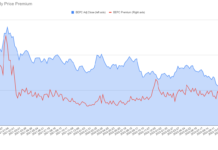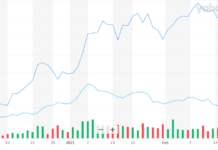by Garvin Jabusch
Lord Nicholas Stern recently said, “Strong investment in sustainable infrastructurethat’s the growth story of the future. This will set off innovation, discovery, much more creative ways of doing things. This is the story of growth, which is the only one available because any attempt at high-carbon growth would self-destruct [emphasis added].” More pointedly, the Investment Bank division at Morgan Stanley in 2016 advised clients that long-term investment in fossil fuels may be a bad financial decision, writing, “Investors cannot assume economic growth will continue to rely heavily on an energy sector powered predominantly by fossil fuels.”
What both Lord Stern and Morgan Stanley understand is that the world has changed and our approaches to investment need to change with it. This is at the heart of what I do working in Next Economics and Next Economy Portfolio Theory.
In thinking about Next Economics and investing, then, it’s worth asking two questions. ”What will the world’s economy look like in 10 and 20 years?” And,” What would I like it to look like by then?”
Our answers should, at a high level, inform where we invest. In arriving at a well-informed thesis hinged on the economy’s ongoing evolutionrather than on the economy of the pastwe can position ourselves to take advantage of high-growth areas, and we can have the effect of advancing a far more efficient economy, one with a better chance of thriving indefinitely. As a pop star once wrote (not the one who won a Nobel Prize), “If it’s a future world we fear, we have tomorrow’s seeds right here.”
Every year since founding Green Alpha, we’ve observed innovations emerge and compound like a fast-rolling snowball. Each innovation, improvement, and tool in the economy is smarter than the last and is immediately put to work in the development of a new generation of smart tools, evidently ad infinitum. I’d write a book with a title like Special Topics in Next Economics 2017, but the pace of innovation is so fast that it would be out of date before I could get it done. Still, there are a few trends that I think merit our attention, and our optimism.
Renewable energies.
They’re cheap and getting cheaper. In 2016, we saw the price of solar-generated electricity fall below that of wind, making it the least expensive source of power generation available, half the price of new coal. Wind and solar, being tech-based (as opposed to commodity-based), will continue getting cheaper, and will generate more and more of the world’s energy until they ultimately have most of the energy market share. At some point, markets will understand solar for what it is and begin to value it appropriately. Companies like First Solar, Inc., and Canadian Solar Inc. are leading the transition in world energy, and if they continue to work on innovation, growth, and maintaining strong fundamentals, they could find themselves among the world’s leading power companies.
Is renewable energy adoption at scale for real? President Obama just wrote about the “irreversible momentum of clean energy” in Science, and many of the world’s largest companies are on the same page, working toward running all operations on wind and solar. The poster firm for this is Google Alphabet, which says it will hit its goal of 100% renewable power for all operations this year. The company is a huge consumer of power, and its transition to wind and solar is resulting in large emissions cuts for the economy, as well as business stability and cost controls for their business. Cities are getting in on this, too, with San Francisco, San Diego and others planning to run entirely on renewables by 2035 or sooner. What about arguments that solar makes electricity rates go up? Well, in some places that use the most solar, the opposite is happening, and utility customers are seeing rates fall.
Inevitably, all this adds up to jobs in renewables. Though coal jobs were a focus of the 2016 presidential election, renewables are where more paychecks are. Wind power supports 88,000 jobs, while close to 373,807 U.S. workers are currently employed in solar, a 25% rise in 2016and that number is predicted to rise to 420,000 workers by 2020. Wind power employs 101,738 workers, a 32% increase over 2015. As of October, coal employed fewer than 54,000, according to the Bureau of Labor Statistics. It has been surprising to many observers, like Jigar Shah, that these remarkable economic changes don’t yet get more recognition.
Across the country, wind power has become the “new corn” for Red State farmers, providing a steady source of income in low-income, rural areas. In fact, the 10 congressional districts that produce the most wind energy are represented by Republicans. California and other states, meanwhile, vow to push ahead in the fight against climate changewith or without President Trump’s blessing.
China is doing more to develop and install renewable energies than any nation. Already the world leader in wind and solar capacity, China now says it will “plow $361B into renewable power generation by 2020, and create more than 13 million jobs” (via Reuters), leaving the U.S. in the dust. According to The Guar
dian, “China now owns five of the world’s six largest solar-module manufacturing firms and the largest wind-turbine manufacturer.” It’s also far and away the world’s leader in electric vehicle production and sales. Also, China is spending over $500 billion to expand high-speed rail. Its war on pollution and commitments to mitigating global warming are real, and China clearly is happy (and even excited) to accept the leadership mantle in sustainable economics, a title many perceive the U.S. has abdicated. Having taken the reins on renewable energy and technology leadership, China is now shoring up the case for its moral leadership as well, made apparent by Beijing’s recent announcement that it will now ban all imports of ivory.
Renewable energyadoption, transportation, storage.
What about renewable energy adoption, plus zero-emissions transportation, plus energy storage? Well, Tesla. I don’t mention this company particularly as a stock recommendation but rather as a primary catalyst and the firm at the nexus of the Next Economy. It’s close to impossible to overestimate Tesla’s importance. Tesla re-introduced, made sexy, and popularized electric cars at a time when major automakers and oil companies were trying to prevent that from ever happening. Tesla’s ambitious approach to battery storage for cars and renewable energy has resulted in their Gigafactory, capable of doubling the world’s current annual output of lithium-ion batteries and lowering costs commensurately. Don’t think storage is a particularly big deal? Consider just one example: After the massive Porter Ranch natural gas leak, the City of Los Angeles decided to invest in battery backup for its electricity supply instead of gas, and has hired Tesla to provide some systems. LA has been among the first big cities to make this move, but then, it was among the first to be bitten by the risks of overreliance on a fossil fuels.
What of Tesla’s and others’ plan to scale up mass-market electric cars? Will that become huge or remain niche? Consider these developments: Germany, Holland, and Norway have all taken steps to ban internal combustion engine-driven passenger vehicles between 2025 and 2030; more major economies surely will follow. India, for example, is now considering a similar move. Yes, these are ambitious goals that could easily be missed, but even if these nations get only halfway to their targets, it is not only incredibly bullish for any carmaker selling electric vehicles but also bearish for oil, since ground transportation is its primary source of demand.
Farming.
A New Yorker article said it best, “Vertical farming can allow former cropland to go back to nature and reverse the plundering of the earth.” Vertical farms are revolutionary for a number of reasons:
- They uses a fraction of the water required for traditional farming,
- They’re close to or within urban centers meaning no need for long-haul transport,
- Their indoor location eliminates need for pesticides and herbicides, thereby mitigating multiple systemic risks (e.g., ocean pollution from agricultural runoff),
- They can be maintained at a lower cost than conventional farming,
- And they’re more resilient to climate change.
No question, vertical farming is what’s next. Business Insider has posted a nifty photo essay of an indoor farm in Brooklyn if you’re interested in how it looks.
Additional key areas…
Computing power. It’s becoming so massive that our collective ability to assimilate data is now and will increasingly be unprecedented. The question will become, what can we do with this amazing ability? And let us not forget the key related areas of cybersecurity and fast-emerging artificial intelligence and robotics, all of which are ushering in an era of heretofore unimagined economic efficiencies. What about the Internet of Things? After a slow start, it is coming into its own: “The falling cost of sensors and connectivity means the internet of things is finally a reality.” Lots of opportunity there. In medicine? Don’t get me started on CRISPR-Cas9, a technique to edit genomes, thus opening up endless possibilities in medicine and biology, with equally endless humanitarian, ecological, and commercial applications.
Okay, enough. We’re overwhelmed with innovations and breakthrough after breakthrough. We get it. For those of us trying to assimilate these changes and find the best path forward, the most important point is this: It’s in seeing the world for what it is becoming and not for what it was that investors and markets are going to allocate capital to manage risks and profit from new opportunities. This all leads, not incidentally, in the opposite direction from fossil fuels.
It is funny and yet poignant that some astrophysicists classify we humans as constituting merely a Level Zero Civilization, with nearly infinite scientific and technological prowess yet to be realized. Well, I’m not qualified to evaluate that theory, but what I do know is that so much progress is being made in so many areas, that I wake up every day excited to think about the world anew and uncover its opportunities.
An earlier version of this post originally appeared on worth.com.
Garvin Jabusch is cofounder and chief investment officer of Green Alpha® Advisors, LLC. He is co-manager of the Shelton Green Alpha Fund (NEXTX), of the Green Alpha Next Economy Index, the Green Alpha Growth & Income Portfolio, and of the Sierra Club Green Alpha Portfolio. He also authors the Sierra Club’s green economics blog, “Green Alpha’s Next Economy.”








